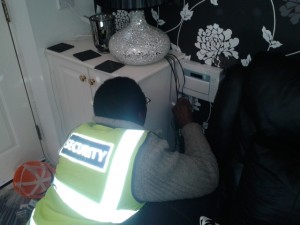Installing a burglar alarm system
Installing a burglar alarm in your house is a good way of protecting your loved ones and belongings. When you have decided to install burglar alarm by yourself, you should make a plan for installing a burglar alarm system which will help you in successfully managing your project of installing a burglar alarm system.
To begin with, you should have a floor plan ready. This can be something you have prepared and not necessarily the one from building controls. Make a count of all possible entries and exits and this could be your rear exit which you don’t use.
The next step in installing a burglar alarm system is to decide how you are going to run cables and this will help you to decide whether you want to install wired or wireless system. Wireless systems are easy to install, but there some setbacks in wireless systems. For example, wireless alarm system still requires hardwire to siren as siren should be kept charged continuously. Wireless alarm systems use radio frequencies to transmit signals, in certain circumstances RF signals may not be the best option to use.
In using wired system, you will not face the challenges mentioned above, but it has its own setbacks. In order to install a wired burglar alarm, you should be somewhat skilled person with DIY works. Running alarm cables can be a daunting task, especially when the house is fully decorated and now you need to run cables.
Alarm cables are normally run underneath the carpets and it is safe to do so. Once you have decided whether it is wired or wireless and have prepared final plan of how many detectors and detector location, now it is the time to run cables.
Mount the sensors and fix door contacts and run cable to each sensors and door contacts. There are many types of cables you can buy alarm cables from local hardware store or from internet. It is best to buy 6 or 8 core cable.
Decide a suitable place for your panel. It is advisable that you choose a place close by main power unit or consumer circuit and secure place to mount your alarm panel. Some panels are fixed with keypad and you do not have any option then installing it at entrance or exit.
Run cable from panel to every detectors and when running cable pay extra attention to hide them or use truncking to cover them. In some alarm systems you will be required to install resistors or capacitors but if it is a domestic alarm system you are very unlikely to come across one that requires resistors. It is also easy and straight forward to install an alarm system without resistors.
Once you have connected all detectors now you can connect the Bell. Siren or bell normally installed outside and most probably in a high location where it can be seen from far.
Once all components are connected, now it is the time to test the system. You can run a walk test, this will test all zones and out puts.
Alarm panels require maintenance you should make a plan for continuous maintenance of the system.

